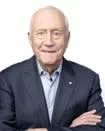The probative value of a comprehensive trademark survey often does not justify the cost. Even a relatively inexpensive trademark survey of modest scope can be of value to a court if it is designed and conducted fairly, it measures the right issue, its importance is not overstated and it is only one of a number of pieces of evidence relied upon.
Given the depth of scientific knowledge and wealth of experience built up over decades, properly conducted trademark surveys have the ability to assess the perceptions of selected universes of consumers with reasonable accuracy. That said, the issue is whether the probative value of a trademark survey justifies its cost. Not infrequently, the survey will support the judge's own common-sense perception – or, if not, the judge will find ways to reduce its weight or exclude it. This is not a criticism of surveys – rather an observation of how judges tend to react to the results of surveys that they disagree with.
In the United Kingdom, surveys are inadmissible without the prior approval of a judge, which is far from automatic. The leading trademark case is Interflora v Marks and Spencer (1 and 2). Plaintiff Interflora conducted a survey and proposed calling survey respondents as witnesses. The High Court allowed the evidence, but the Court of Appeal overturned this decision, finding that anecdotal evidence from a number of witnesses "cannot stand proxy for the impression of the average consumer".
The court in Interflora decided that:
- a party may conduct a pilot survey without permission, but at its own risk as to costs;
- no further survey may be adduced without the court's permission and disclosure of the pilot survey; and
- no party may adduce evidence from survey respondents without the court's permission.
Also, even though a survey technically may be admissible, the court is to evaluate at an early stage if it would be of "real value" and whether its likely benefit would justify its cost.
In the United States, trademark surveys are thought by many to be highly influential, but several studies have cast doubt on this perception. In a 2006 paper entitled "An Empirical Study of the Multifactor Tests for Trademark Infringement", Barton Beebe reviewed 331 published cases and found that only about 20% of them referred to survey evidence at all, while the results of the survey were consistent with the decision in only 7% of the cases. He concluded that survey evidence in practice is of little importance.
In a 2012 paper entitled "The Role of Consumer Surveys in Trademark Infringement: Empirical Evidence from the Federal Courts", Bird and Steckel studied 533 cases and found that in in only 16.6% of them was survey evidence referred to in the opinion. They concluded that consumer surveys are not particularly useful, even in likelihood of confusion cases.
In a paper entitled "Trademark Surveys: An Undulating Path", Diamond and Franklyn studied 465 responses to questionnaires sent to attorneys who are members of the International Trademark Association and concluded that although only 19.2% of surveys were presented at trial, they are more widely used in pre-trial stages. In general, the respondents considered their impact as being influential to the outcome of the cases.
In Canada, a leading Supreme Court of Canada case involving survey evidence is Masterpiece v Alavida. Writing for a unanimous court, Justice Rothstein referred to the principles set out in R v Mohan in considering the admissibility of expert evidence in trademark cases. These are:
- relevance;
- necessity in assisting the trier of fact;
- the absence of any exclusionary rule; and
- a properly qualified expert.
The judge emphasised that expert evidence must be necessary and not merely helpful. The expert's opinion must not be affected by the objectives of the party that retained the expert.
His remarks do not mean that survey evidence has no place in trademark litigation. On the contrary, it is likely that in many cases the relevant universe of consumers may be unfamiliar to the trial judge, or the market addressed by the competing goods or services may be specialised and outside the knowledge of the trial judge. In addition, where the gap between the respective goods and services of the competing trademarks or the differences in the competing trademarks is sufficiently large, even experienced lawyers and judges might see no likelihood of confusion when significant confusion in fact may exist. It should also be remembered that surveys are only one aspect of social science that can be used in proper cases to prove or disprove public perceptions in relation to likelihood of confusion.
The tension between judges' reluctance to give up deciding likelihood of confusion issues for themselves except in particular situations and the scientific approach to measuring consumer perceptions leads to a more fundamental question as to whether the likelihood of confusion test ought to be supplanted with a system that more properly balances the rights of traders and the rights of the public to freedom of competition.
In an article entitled "Confusion Isn't Everything", Professors William McGeveran and Mark McKenna have discussed how the concept of likelihood of confusion has expanded in the United States over the decades. They argue that unduly focusing on likelihood of confusion can undermine the competition and communication values that justify trademark rights. They conclude: "We need straightforward limiting doctrines that put confusion detection back in its place – not as the purpose of trademark law, but as its tool."
The content of this article is intended to provide a general guide to the subject matter. Specialist advice should be sought about your specific circumstances.

